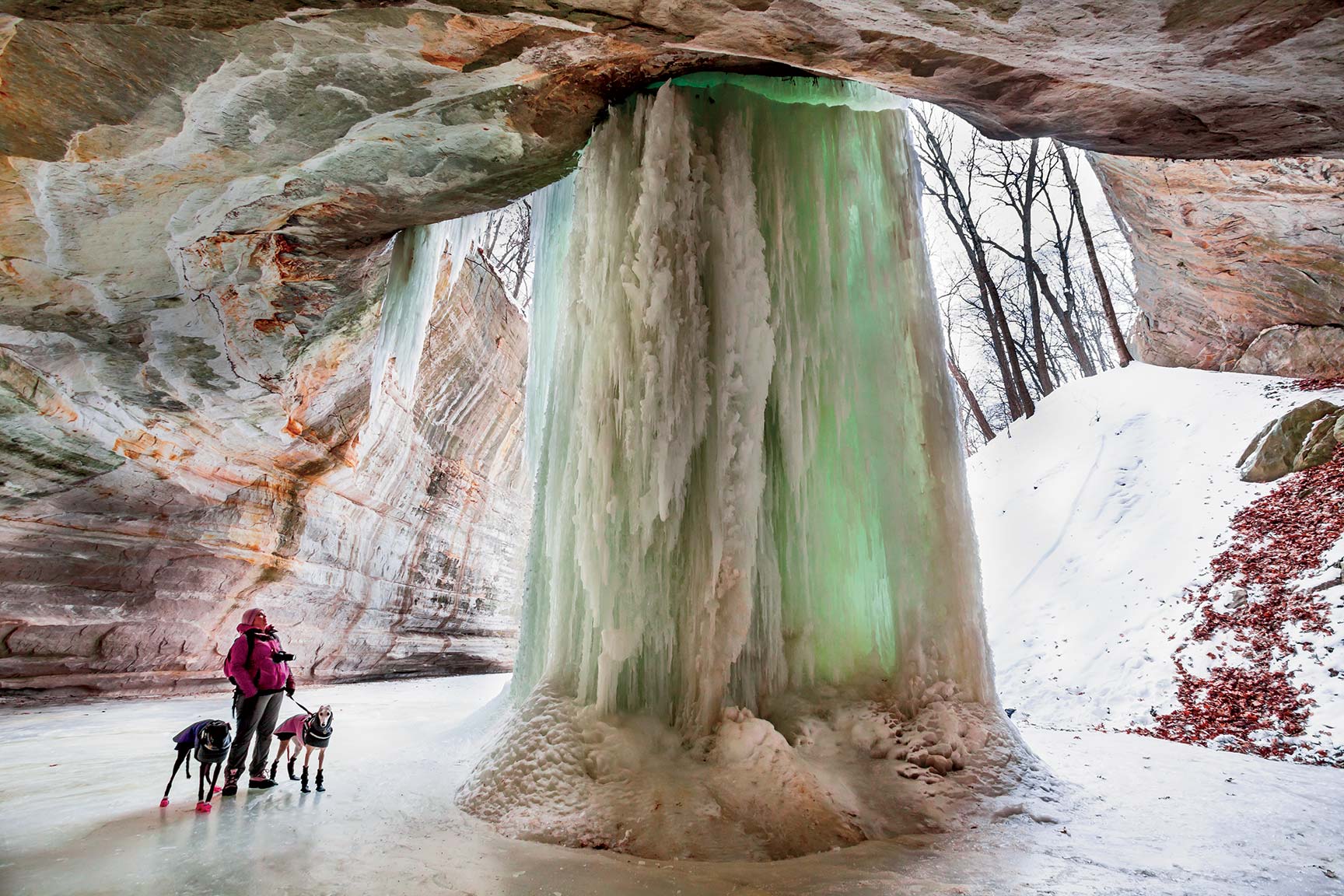Some 19,000 years ago, torrential meltwater from a receding glacier tore through central Illinois, gouging out the Illinois and Kankakee Rivers and the dramatic sandstone canyons of what is now Starved Rock State Park. Those water-carved canyons attract thousands of city dwellers in spring, summer, and fall, but I’ll never forget the park’s spectral beauty when my wife and I first visited in winter.
It was just after the new year, on the eve of a historic arctic chill. The thermometer had already dipped into the mid-20s, and our breath billowed in front of us as we followed the easiest trail, which hugs the shore of the Illinois River. The occasional birdcall overhead sliced the quiet like a scalpel. As we descended into the deeper reaches of the park, we were struck dumb by the silent agony of frozen waterfalls. There are many of them in the park: At Sac Canyon, a broad series of plateaus fan water into a stream below; the falls at French Canyon cut a twisty path down a shallow incline of sandstone; the spectacular falls at St. Louis Canyon perform a long, straight drop past a commanding amphitheater of rock.
But what stopped us in our boot prints that day was Ottawa Canyon’s falls (pictured), where an overhang and a landing below it allowed us to cross, precariously, behind the sheet of water and look out into the canyon. In the cold, the water hung like thick braids of silver hair, cascading earthward but shocked into stillness, awaiting spring’s thaw.




Comments are closed.